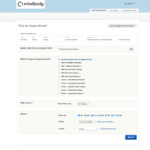Maybe it’s harder to lose weight, you notice you are extra tired in the afternoon or a few hours after eating, or you are getting more cravings than you used to. Could this be a sign of something more serious?
You may be familiar with the term diabetes, but have you heard of insulin resistance? It’s the first change in your body before diabetes occurs. High insulin is like the canary in the coal mine for diabetes.
When you eat a high sugar meal, that sugar goes into your bloodstream. Your pancreas then secretes insulin to bring the sugar from the bloodstream into the cell. If you continue to eat high sugar meals, over time your cell gets resistant to that insulin and you’ll need more insulin to get the same amount of sugar from the blood into the cell. If this isn’t stopped, high insulin resistance eventually leads to diabetes.
The first step is to get a baseline of where your insulin levels are at. Historically, family doctors have measured 3 month average blood sugar levels, but not insulin as well. Without this measurement you’re going to miss some important pieces of the story because high levels of insulin, regardless of sugar levels, have been tied to increased cardiovascular mortality, cancer and markers of inflammation.
If you are showing higher than average insulin levels, here are a few natural ways you can work to combat that.
Intermittent Fasting is an eating pattern that cycles between eating for 8 hours of your day, and fasting for 16. By eating for fewer hours during the day, and for best effects eating earlier in the day (ie. 9AM – 5PM), our metabolic system can align with our circadian rhythm and allow regeneration vs. digestion to happen in our sleep.
Low Carb Diet is a great way to combat insulin, as high carb foods spike sugar levels, causing your pancreas to work harder than it needs to. You can also examine the types of carbs you’re putting into your body and focus on low glycemic index foods like sweet potatoes, brown rice & quinoa – to name a few.
Strength Training. Another avenue to improve insulin resistance is through heavy weight and low rep fitness training. When you’re lifting heavy, you secrete hormones that act on insulin and on individual cells to decrease insulin resistance and improve sugar uptake into the cell. Increased muscle mass also improves your blood sugar because muscles require more energy to maintain than fat so more sugar is taken from the bloodstream into the muscle cells, leading to improved sugar levels in the blood.
“When I work with patients who have symptoms of low energy, weight increase, or even those who feel generally healthy but have a family history of metabolic health problems, I like to test their fasting insulin levels.” says Dr. Jonathan Bastian, Aeon’s Medical Director “If their fasting insulin levels are high (even if they have a normal HgA1C), I like to start them on a combination of dietary, lifestyle, and medication intervention BEFORE they transition to prediabetes.” He goes on to share that in as little as 8 – 12 weeks, early actions like this tend to have a substantial effect on symptoms and on one’s predisposition for future disease.
To learn more about testing, using tools like Continuous Glucose Monitors (CGM), nutritional hacks to prevent sugar spikes, and how the latest supplements and pharmaceuticals can help you, call/text us at 403-454-8477 or if you live in Calgary, Alberta come visit us.







